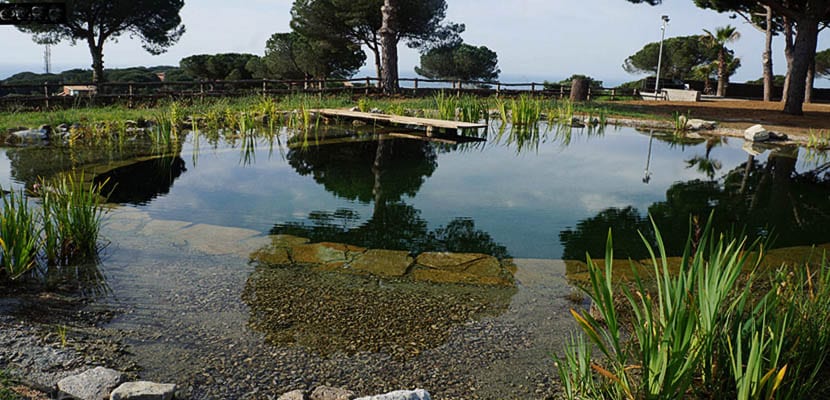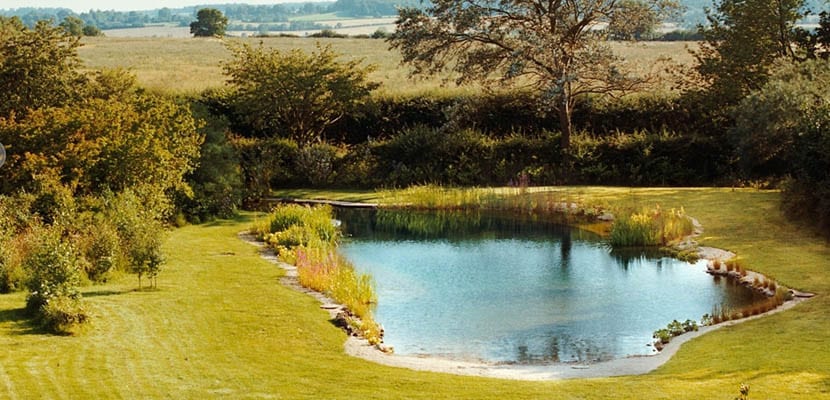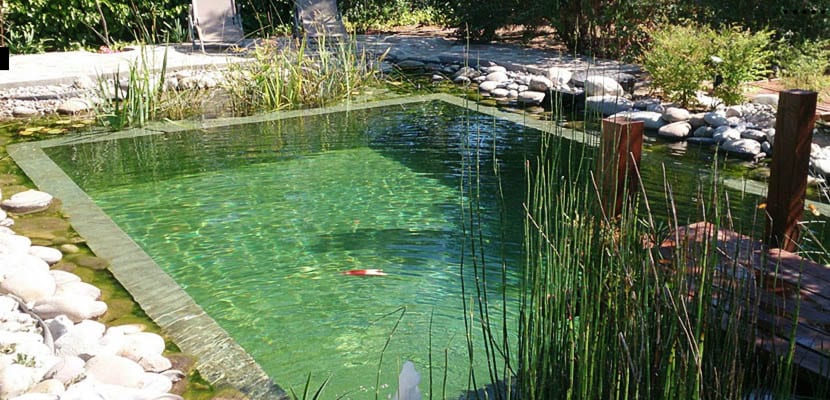
The sensation caused by swimming in virgin natural spaces is unique and so powerful that it is difficult to forget about it. We don't have to do it anyway; we can try to reproduce it, creating a natural pool in the garden. A concept that moves away from the traditional one and provides us with another type of experience.
In the heat of the heat wave, who does not want to take a bath? A natural pool allows us to cool off during the summer and enjoy a constantly evolving ecosystem during each of the seasons. Because natural pools acquire characteristics of both a garden and a traditional pool.
There is a tendency to go back to nature. A thought greener and more ecological that invites us to look for alternatives to the "usual". It should not surprise us therefore that every day more people are inclined to build a natural pool. An ecosystem that is nourished by the nature that surrounds them and that can contain different cold-water fish, becoming an attraction, especially for the little ones.

Characteristics of a natural pool
As we have already told you, natural pools try to create an ecosystem that is close to the natural one, without giving up crystalline fresh water, chemical free. These are their main characteristics, those that differentiate them and move them away from the traditional concept of swimming pools.
Natural ecosystem
Creating an ecosystem that is close to the natural one entails an important preliminary and independent study in which different factors are considered: climatology, type of water, biotope, altitude ... Part of the space of a natural pool is dedicated to the cultivation of aquatic plants that will change the appearance of the pool with each season and will contribute to its regeneration and purification.
It is also common to find in natural pools different varieties of cold water fish. Koi fish and goldfish are some of the most popular; they resist low temperatures and are very long-lived. The depth of the natural pool will be decisive for its survival. A minimum depth of 80 cm will allow the fish to withstand extreme heat and frost.
Trying to emulate a natural pond, natural pools have shallower and deeper areas. Those of less depth, will be the hottest, being able to raise its temperature up to 26ºC in summer. While the deepest, they will be the best to cool off in summer.
Cleaning: no chemicals
In ponds and lakes large and deep enough, the water is naturally kept clean. Hence, this state is emulated in natural pools; Using the purifying power of plants and microorganisms to maintain the clean, clear and safe water.

A conventional swimming pool uses chemicals to kill microorganisms in the water such as phytoplankton and bacteria. The challenge of natural pools is to guarantee clean and healthy water throughout the year without using these chemicals. How? Using the purifying power of plants and microorganisms and relying on innovative systems technologically speaking. Systems that play with PH, alkalinity or the creation of oxygen-nitrifying bacteria to keep the water free of viruses and bacteria that could negatively affect our health.
Economical maintenance
In theory, a natural pool requires a less maintenance than a traditional pool. No chemicals are handled and no drain pumps are required for annual repairs or cleanings, which add to the cost of maintenance. However, if it is necessary to take care of the plants and remove the leaves so that they do not accumulate.

We need take care of the plants of the natural pool, as we do with those that we plant in our garden if we want to see them grow healthy and strong. We will also have to remove the leaves, so that the nutrient levels of the water are kept low. It is also interesting to receive a visit from the maintenance team once a year to carry out a review of the equipment.
Design of a natural pool
The size, volume of water, depth, are parameters that intervene in the correct design of the biofilter for the natural pool. The filtration area should represent approximately 20% of the pool, the swimming area constituting the remaining 80% .; designing natural pools from 20m2.
As we have already mentioned, natural pools try to imitate the shape of natural lakes and ponds. Hence, most natural pools have irregular shapes and play with different depths, integrating into the landscape. An integration to which the natural-looking coatings used also contribute.
The green slate bottoms, the rustic stone steps, the wooden piers and the small natural stone waterfalls, are usually recurring elements in this type of pool that is not at all similar to the traditional ones.
Do you like natural pools or do you prefer conventional ones?
Images - gartenart, Ecological pools